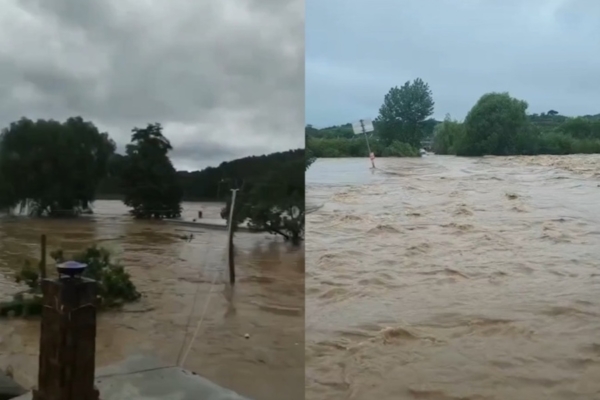Recently, Huludao, Liaoning Province, encountered an unprecedented major flood, with official reports stating 11 deaths and 14 missing individuals. Authorities emphasized that the flood was caused by heavy rainfall, but local residents believe it was due to the release of water from a reservoir. People have accused the authorities of severely concealing the true number of deaths, claiming that at least thousands of people have perished, with some villages having no survivors at all.
On the evening of August 23, official reports from Huludao, Liaoning Province mentioned severe flooding in Jinchang County and Suizhong County due to heavy rainfall. The disaster resulted in 10 fatalities, 1 person sacrificed in the line of duty, and 14 missing individuals who are still being searched for. The preliminary statistics reveal that the affected population in Huludao City reached 188,757 people, causing losses of 10.3 billion yuan. Eight national and provincial highways, 210 rural roads, 187 bridges, and power and communication services for 128,580 households in 29 towns and 286 villages were impacted to varying degrees.
On social media, under the official news updates from Huludao, people from different regions questioned why such significant news was not prominently featured and had to be sought out. Some raised concerns about the lack of attention and urgency towards the severe disaster.
Local young people also questioned if the news of the rainstorm and flood in Huludao had reached the northeast or southern regions.
Apart from intentionally downplaying the severity of the disaster in Huludao, the Chinese authorities also restricted some civilian rescuers and warned them via text messages to not spread rumors. Some volunteers were even temporarily blocked from live streaming, with officials claiming their content involved sensitive information.
Volunteers emphasized the need to actively inform the public about the situation to garner more assistance for the affected areas. They highlighted the dire circumstances faced by the impoverished county, where livestock and homes were swept away, leaving residents struggling to survive.
Efforts to deliver aid to the disaster-stricken areas faced obstacles from officials who demanded that volunteers hand over relief materials for government processing.
A local resident expressed how multiple villages were devastated, with some villages completely devoid of survivors. Their personal account painted a grim picture of the extensive damage and loss of life caused by the floods.
Due to the Chinese government’s history of suppressing unfavorable information, there is widespread skepticism among the local population regarding the accuracy of the official death toll and missing person figures.
Civilian rescuers disclosed that among the worst-hit regions in Liaoning’s Jinchang County was Datun Town, encompassing various villages severely affected by the floods.
A resident of Huludao revealed accounts of the widespread destruction and loss of life in the area, underscoring the immense impact on communities and the urgent need for assistance.
Despite authorities attributing the flooding to heavy rainfall, local residents suspected that reservoir releases were the main cause of the catastrophic floods. Some individuals openly shared on social media platforms that three reservoirs simultaneously discharged water during the event.
Reports from informed locals contradicted the official announcements regarding the timing of reservoir releases, prompting further scrutiny on the events leading up to the devastating floods.
It was revealed that several reservoirs, including those in South Hu Po and Hu Shan, were involved in releasing floodwaters, impacting various regions in Huludao.
Amidst the ongoing rescue and relief efforts, numerous civilian rescue teams across the country have been actively delivering supplies to the affected residents, with a focus on reaching those in the most critical need. Hindered by impassable roads and damaged bridges, some rescue teams resorted to trekking on foot to provide aid to isolated villages.
A village resident described the dire situation in their community, emphasizing the urgent need for essential supplies and the challenges faced by those displaced by the floods.
Local volunteers shared firsthand observations of the devastation, highlighting the emotional toll of witnessing the damages and the resilience shown by the affected communities.
As the rescue and recovery operations continue, the pressing needs for food, shelter, and basic necessities remain a top priority for the residents grappling with the aftermath of the catastrophic floods.

